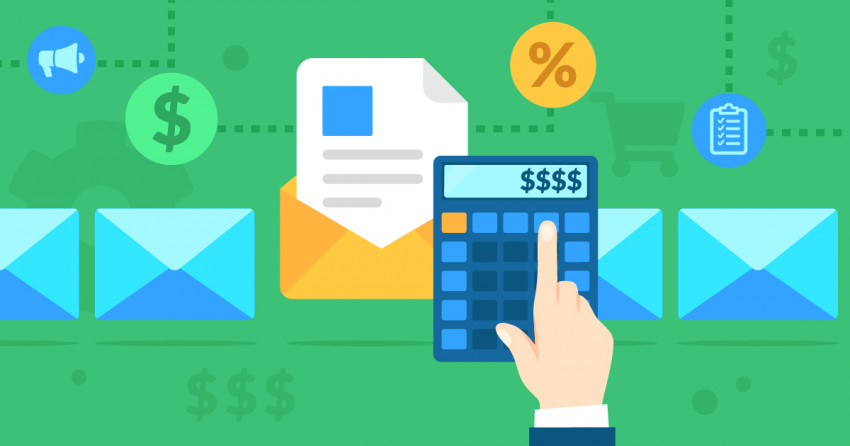Inside this Article
Features
Constant Contact Offers Plenty of Features, but AWeber Has a Slight Edge
The Constant Contact vs AWeber showdown ended up being all about the small things. And with such fierce competition, every little detail is important. It was quick to set up my test campaigns on both platforms, but it didn’t take me long to realize that AWeber was almost always one step ahead.Templates
Let’s talk about email templates first. AWeber offered a selection of over 700 templates dominated by vibrant designs. Some seemed a bit outdated, but most worked just fine for my relatively basic email marketing needs. There’s also a huge stock-image library with 6,000+ royalty-free images. This is a nice touch, as it’s not something that all email marketing services offer – ActiveCampaign comes to mind as a top competitor that doesn’t provide a stock image library.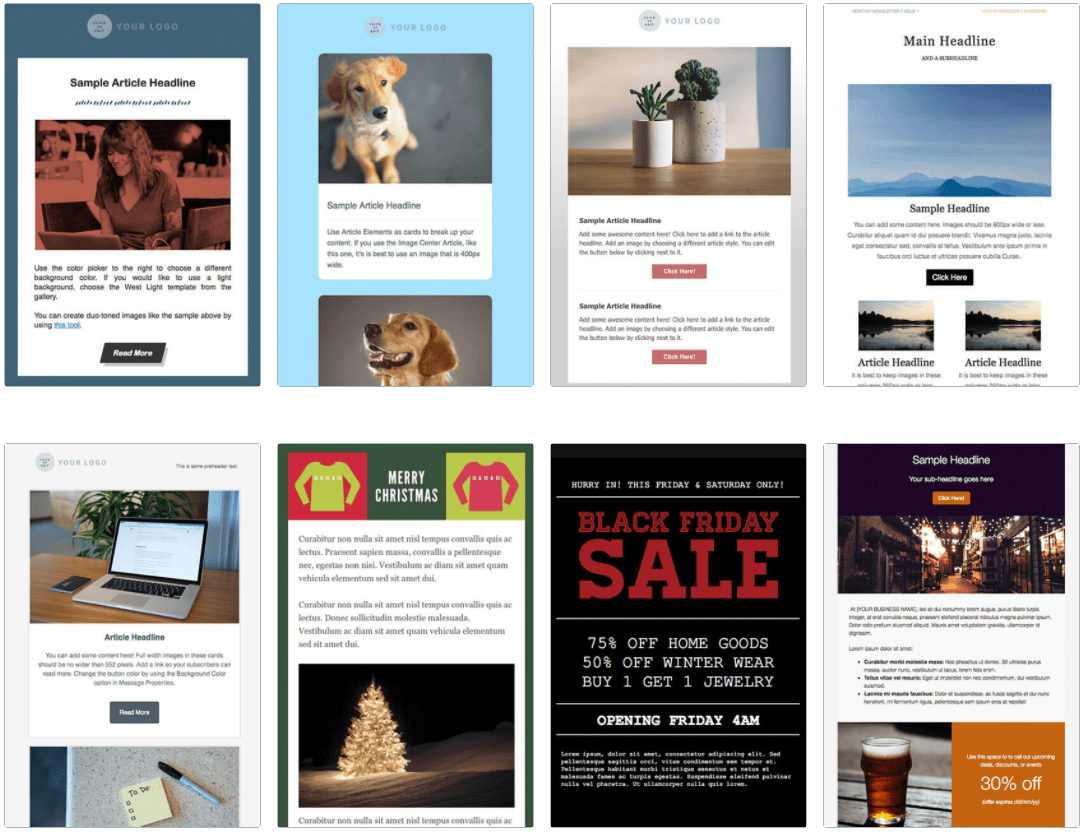
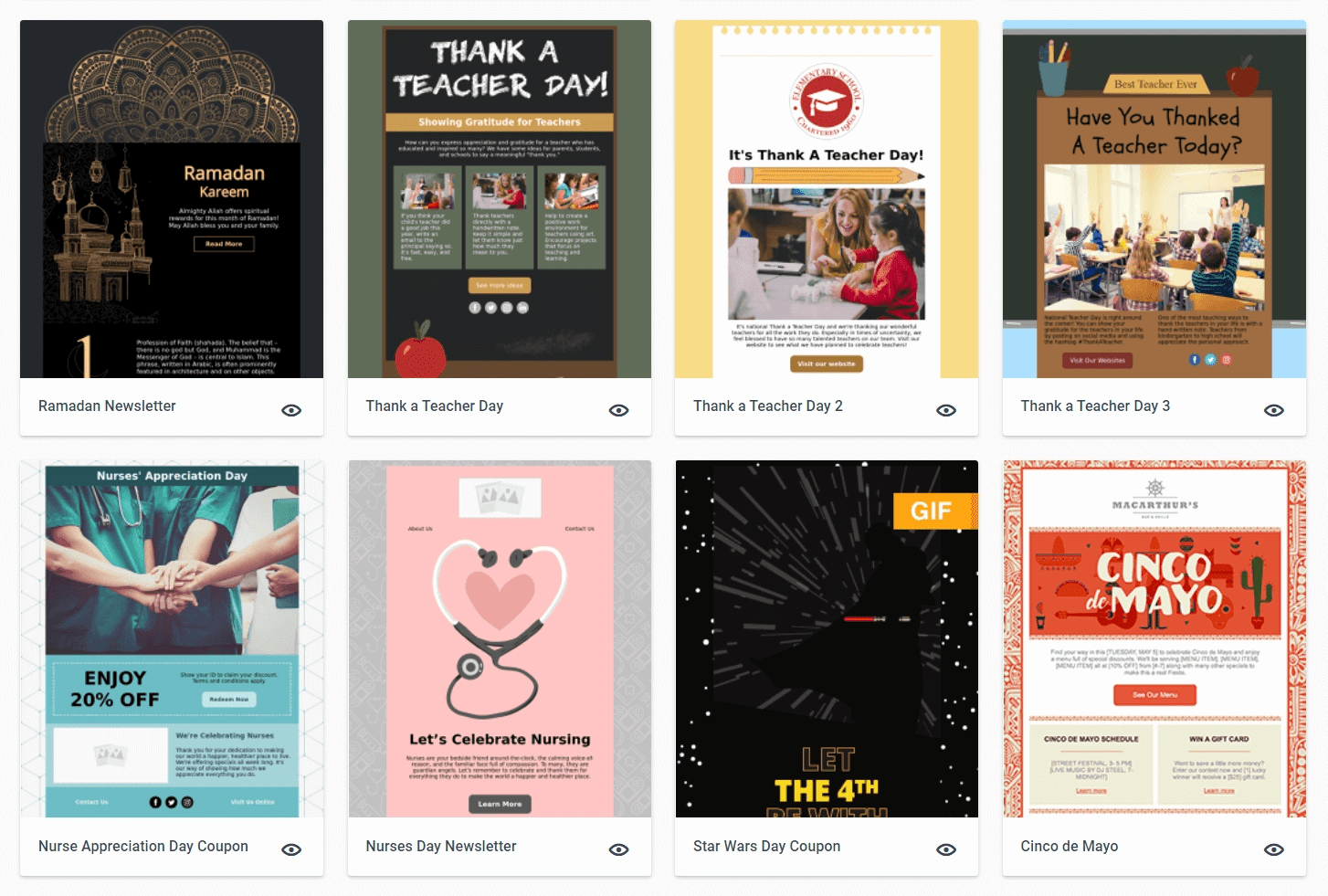
Integrations
Being able to connect your favorite apps with your email marketing platform is key to optimal functionality. Currently, AWeber offers more than 800 integrations, and Constant Contact has its own app Marketplace with around 350 integrations. I should note that both platforms integrate with Zapier, which allows users to connect with thousands of tools and applications. Popular integrations (called Zaps) include social media platforms such as Facebook and Twitter, and team management tools like Trello and Asana.Automation
With top email marketing services such as GetResponse and ActiveCampaign offering super-advanced automation tools, we’ve come to expect similar features from all platforms. But do AWeber and Constant Contact deliver? Both offer trigger autoresponders. These are preset emails sent when specific actions are taken – when someone subscribes to your newsletter, for example. They also both have great segmentation options, such as automatically adding tags when specific conditions are met. This means you can tag everyone on your list who has clicked a certain link, for example. However, Constant Contact takes a bit more time to automatically update lists, which can be a problem, especially if you’re designing custom drip campaigns that rely on precise timing. AWeber seems to update tags and lists a bit faster. Aside from basic triggers, AWeber also offers advanced behavioral automation with its Pro plan, which starts at $12.50/month. This is a great deal, and it opens up a whole new world of automation possibilities. You can use AWeber’s advanced automation to set up complicated chains of emails bound by specific triggers. For example, an automation could add new subscribers to a list and send a special offer after a two-week delay. If a subscriber opens the email with the special offer, it could then send them another email with deals and discounts after a further four-week delay. Unfortunately, Constant Contact doesn’t offer any advanced automation workflow system, one of the things that lost it some marks in our Constant Contact review. You can only pick from automatic welcome email templates, birthday email templates, and anniversary email templates. And without custom automation options, you’ll end up spending a lot of time manually scheduling and sending out campaigns. If you’re looking for an email marketing service with a really robust automation system, I recommend you check out GetResponse. With GetResponse’s Plus plan, you gain access to some of the most sophisticated automation tools on the market – GetResponse’s easy-to-use branching tools allow you to set super-specific conditions and create really powerful automation workflows.Landing Pages
If you’re looking to have a landing page up and running in a few minutes, both AWeber and Constant Contact can help. Both builders are easy to use, but AWeber offers considerably more templates (40+ vs Constant Contact’s 5).A/B Testing
Performing tests and optimizing emails is something marketers have to do if they want to run successful campaigns. Constant Contact’s A/B testing tools don’t offer too many options. You can test subject lines, and that’s pretty much it. On the other hand, AWeber allows you to test subject lines, copy, email designs, and more – the possibilities are endless here and it’s something that really impressed us in our AWeber review.Native Right-to-Left (RTL) Support
This won’t be an issue for most marketers, but if you’re writing emails in Hebrew or Arabic, you’ll definitely benefit from native right-to-left (RTL) language support. AWeber offers full support for RTL languages. Constant Contact doesn’t. With more templates, better automation, and more advanced A/B testing, AWeber wins the features round with relative ease.Ease of Use
Constant Contact’s Super-Clean Interface Made Me – Almost – Overlook Its Shortcomings
I didn’t expect either platform to give me a hard time. But although AWeber was easy to use, I got to grips with Constant Contact’s interface in record time. It seems that Constant Contact was designed with ease of use in mind, catering to new marketers and marketers who are looking to get things done fast. The thing is, that’s both a blessing and a curse. Yeah, Constant Contact’s drag-and-drop editor is intuitive, but the tendency to oversimplify tasks and procedures has left many features lacking or incomplete. I appreciate the clean interface, but I wish they’d put a bit more thought into other necessary tools and functions, such as A/B testing, automation, and analytics.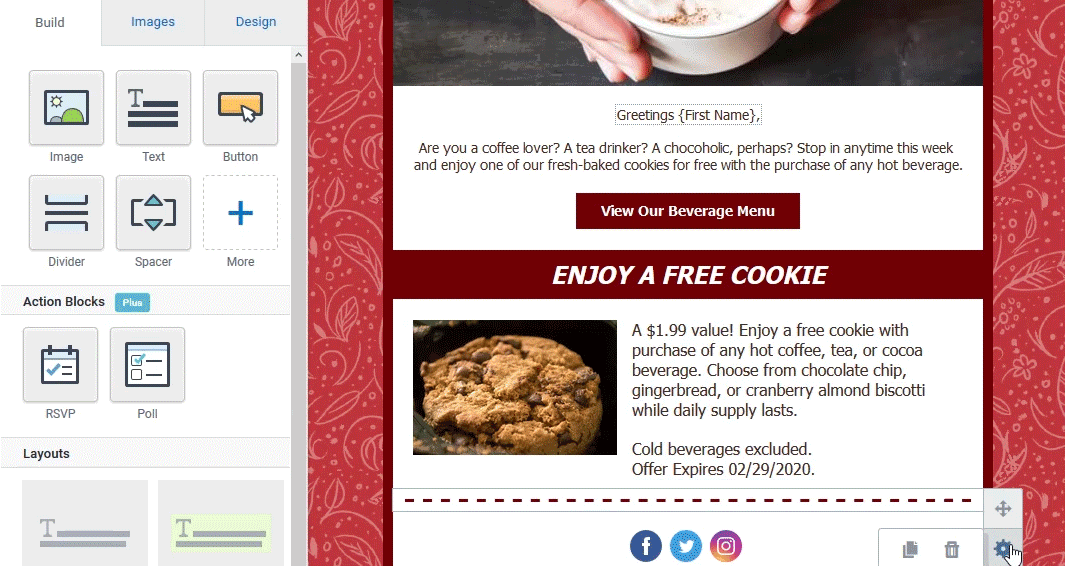
Deliverability
The Truth Behind Deliverability Rates
All your email marketing efforts will be in vain if your emails never actually make it to your subscribers’ primary inbox. Deliverability rates are crucial – but coming up with arbitrary percentage rates isn’t the way to go. Deliverability rates will always be unreliable because several factors can contribute to high/low deliverability rates. Usually, these numbers have less to do with the platform itself and more about the precautionary measures we take as marketers. If you want to know more about boosting your deliverability rate, you need to check Ben‘s in-depth research on the issue. That said, there are a few things you can look out for from an email service provider. And the first thing you need to check for is DKIM authentication. DKIM adds an encrypted signature to the header of your messages, helping email providers verify that it’s really you sending the email. Both AWeber and Constant Contact offer DKIM authentication and come with easy guides that can help you sort it out in a few minutes. Next up, you need to make sure the platform you’re using has a strict anti-spam policy – the stricter the rules, the better and safer the environment for honest marketers like you. Keep in mind that resorting to spam on any platform is the fastest way to get your account suspended. AWeber and Constant Contact are no exception. The spam filter test is a great way to test whether platforms have strong defense mechanisms against shady practices. I basically uploaded a bunch of spam email addresses and waited to see how each platform reacted. AWeber instantly blocked any spam emails from being added to my lists. With Constant Contact, I was initially allowed to upload several spam emails, but then my account was flagged for suspicious activity within a matter of minutes – definitely a good sign! By far, the best way to ensure a high deliverability rate is to obtain your own dedicated IP address. Unfortunately, that’s not an option with either platform, but that won’t be a deal-breaker for most. If it’s really important to you, some other platforms (such as GetResponse) offer a dedicated IP address with their most expensive plans.Analytics and Reporting
AWeber’s Analytics Suite Is Excellent, Constant Contact’s Leaves a Lot to Be Desired
Never underestimate the power of statistics. The more you know about your campaigns, the easier it is to develop fresh ideas as you learn more about your subscribers. And while both platforms offer reporting tools, AWeber completely outshines Constant Contact in almost every respect. AWeber offers some of the most extensive reporting tools on the market. With the click of a button, you can generate reports on overall data, email opens, link clicks, and contact location. And that’s just as a free user. Upgrading to the Pro plan will unlock access to detailed reports, including advanced message analytics, analytics about your audience and account, and email sales tracking. If you want to learn about AWeber’s excellent analytics suite in more detail, I’d recommend checking out our full AWeber review.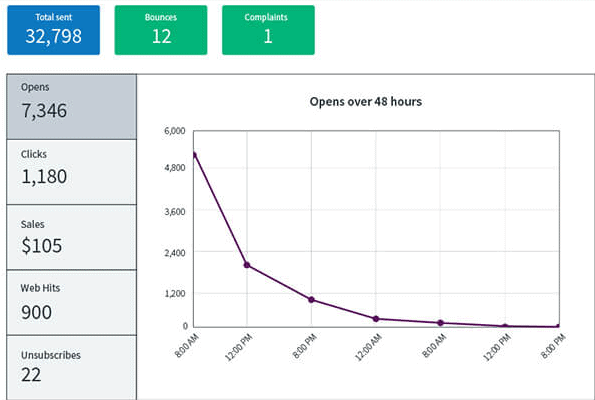
Pricing
AWeber Has a Free Plan and Is a Bit Cheaper than Constant Contact
Both AWeber and Constant Contact offer great value with their plans, but AWeber is cheaper. Additionally, AWeber offers a Free plan, while Constant Contact doesn’t. That alone may be enough to tip the scales.Here’s What You Get for Free
With AWeber’s Free plan, you can send up to 3,000 emails to a maximum of 500 subscribers every month. That’s a pretty good deal, considering you gain access to hundreds of templates, basic automation, stock images, reporting, and more. Constant Contact doesn’t have a free plan, but does offer a generous 60-day trial for US customers, allowing users to send an unlimited number of emails to a maximum of 100 contacts. This is the longest trial I know of! Other than that, you’ll be able to access all of the features available with the basic Email plan.Here’s What You Get If You Pay
AWeber offers a simple scaling Pro plan. It starts at $12.50/month for 500 contacts, scaling all the way up to 25,000 contacts for $149.99/month. If your contact list is bigger than that, you’ll have to contact AWeber support. The Pro plan includes everything on the Free plan, but it also unlocks behavioral automation, sign-up form split testing, and advanced reporting. You’ll get a discount if you sign up for an annual plan instead of a monthly plan. Constant Contact offers two paid plans. The basic Email plan starts at $12.00/month for 500 contacts, and the Email Plus plan starts at $35.00/month for 500 contacts – quite a bit more expensive than AWeber. The Plus plan unlocks extra features, including automated campaigns, e-commerce segmentation, customizable pop-ups, and more. I recommend you sign up for a monthly plan before committing to a 6-month or annual plan. That way, you’ll have plenty of time to test things and figure out if Constant Contact is the right platform for you. Constant Contact also offers a 30-day money-back guarantee on both its plans. AWeber doesn’t have a strict refund policy, but the support team can – on a case-by-case basis – issue partial refunds for canceled annual plans.AWeber vs Constant Contact Pricing Comparison Table
| Plan | AWeber Free | Constant Contact Email | AWeber Pro | Constant Contact Email Plus |
|---|---|---|---|---|
| Price | $0 | $12.00/month | $12.50/month | $35.00/month |
| Number of contacts | 500 | 500 | 500 | 500 |
| Number of emails | 3,000 | Unlimited | Unlimited | Unlimited |
| Number of users | Unlimited | 3 | Unlimited | 10 |
| Integrations | 800+ | 350+ | 800+ | 350+ |
| Discount for annual plans | N/A | 15% ($17 + first month free) | 19.2% ($16.15) | 22% ($35.06) |
| Money-back guarantee | N/A | Yes | Yes (partial refund on a case-by-case basis) | Yes |
Support
Excellent Support from Both Sides
Great customer support is essential to complementing a great product. When using new software, it’s important to have a reliable means of finding the necessary answers. Fortunately, both AWeber and Constant Contact offer email, live chat, and phone support on all plans. They also offer tutorials, guides, and other resources you can use to get the help you need. I contacted both support teams through live chat. My query was: What happens if my contacts exceed the set number? Will I be charged extra? AWeber’s team got back to me in a matter of seconds. Their support was quick to reply, asking about my contact list and whether I’d need help with a potential migration. (AWeber offers free migration services; they can help you transfer whole automation workflows, sign-up forms, and whatnot.)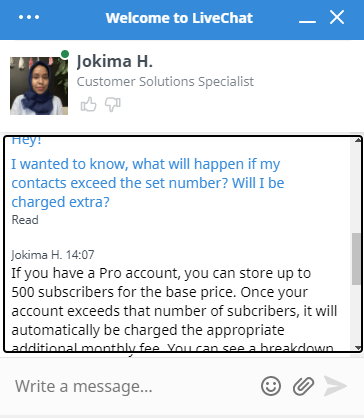
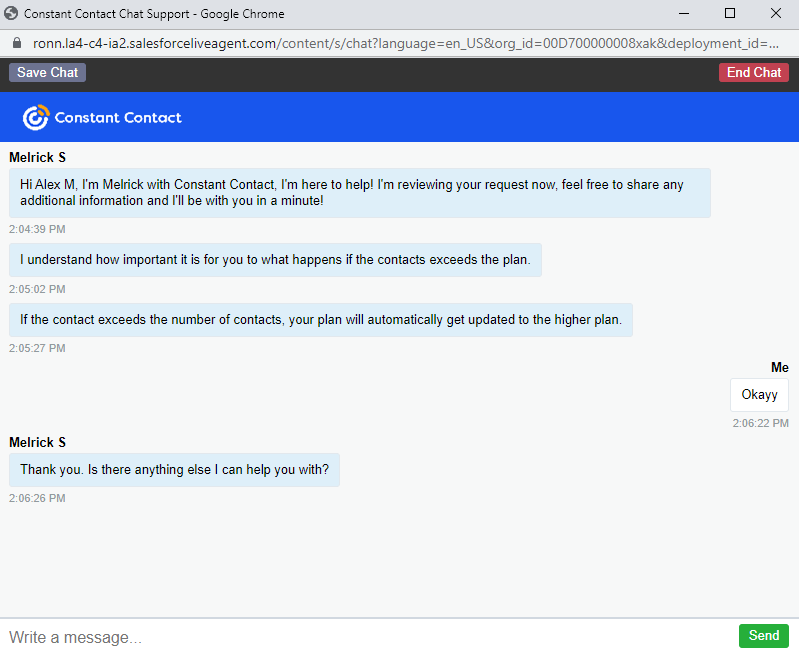
AWeber vs Constant Contact – The Verdict
AWeber wins this one, but this battle wasn’t as one-sided as the table below suggests. Yes, Constant Contact only scored one point, but it trailed AWeber closely throughout. It does many things well – just not as well as AWeber. AWeber has more templates, more integrations, better automation, more extensive A/B testing tools, more advanced analytics, native RTL support, and not forgetting a pretty decent free plan. Constant Contact, on the other hand, provides an intuitive interface that streamlines procedures – a huge plus for marketers who are looking for an easy-to-use platform to get started. Not sure that either of these options is right for you? If you’re looking for a high-performing, easy-to-use marketing platform packed with useful features, I recommend you give Active Campaign a try. And if you still have doubts, I’d check out our list of the top email marketing services in 2025.AWeber vs Constant Contact Comparison Table
Templates
700+
240+
AWeber
Automation
Advanced automation tools
Limited automation tools
AWeber
Apps and integrations
800+
350+
AWeber
Landing Page Builder
40 templates
5 templates
AWeber
A/B testing
Yes
Yes, but it’s limited
AWeber
Native RTL language support
Yes
No
AWeber
Ease of use
Easy to use
Intuitive interface, perfect for beginners
Constant Contact
Deliverability
Draw
Reporting and analytics
Excellent analytics suite + tools to take immediate action
Limited reporting capabilities
AWeber
Pricing
Great free plan, affordable paid plans
No free plan, slightly more expensive paid plans
AWeber
Support
Draw
Total rounds won
8 🥇
1 🥈
WINNER- AWeber


![AWeber vs. Mailchimp [2025] – The Winner Might Surprise You](https://dt2sdf0db8zob.cloudfront.net/wp-content/uploads/2019/06/AWeber-vs-Mailchimp-1-850x435.jpg)
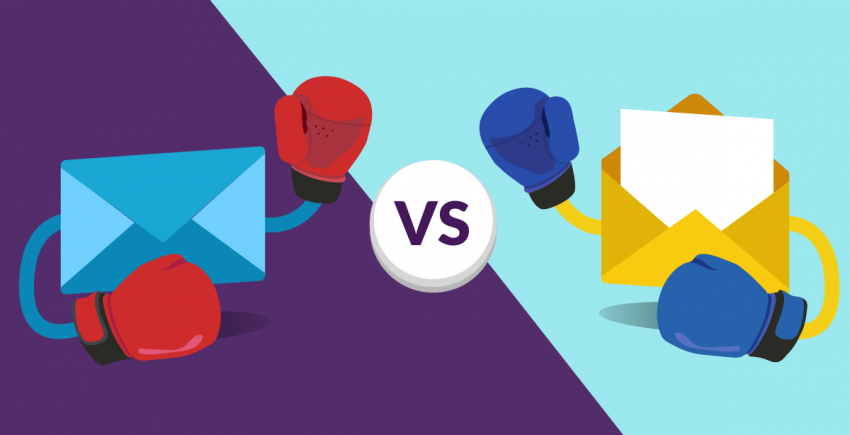

![10 Best Email Marketing Software for Ecommerce [2025 Update]](https://dt2sdf0db8zob.cloudfront.net/wp-content/uploads/2023/08/Best-Email-Marketing-Software-for-Ecommerce-850x446.jpg)
![Keap vs Mailchimp: Which Offers Better Value? [2025 Update]](https://dt2sdf0db8zob.cloudfront.net/wp-content/uploads/2023/06/Keap-vs-Mailchimp-850x446.jpg)
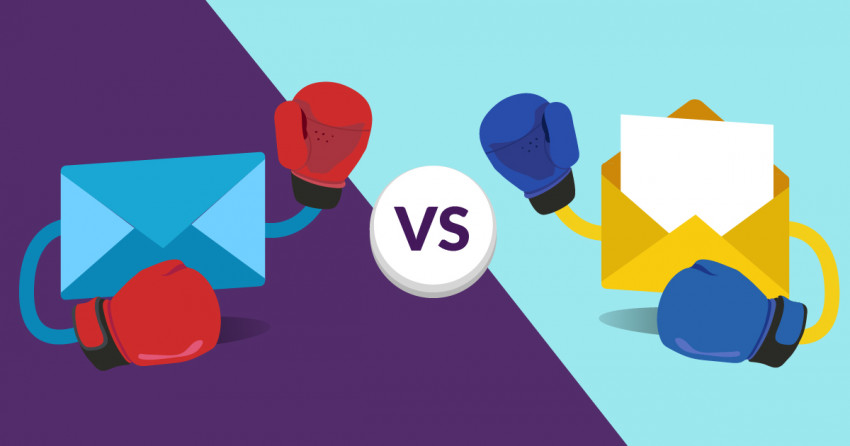
![Drip vs Mailchimp: Read Our Advice Before You Sign Up [2025]](https://dt2sdf0db8zob.cloudfront.net/wp-content/uploads/2022/10/Vs-1-850x446.jpg)
![Drip vs Mailchimp: Read Our Advice Before You Sign Up [2025]](https://dt2sdf0db8zob.cloudfront.net/wp-content/uploads/2022/08/Emily-Robin.jpg)
![MailerLite vs ConvertKit: Read This Before You Sign Up [2025]](https://dt2sdf0db8zob.cloudfront.net/wp-content/uploads/2022/10/Vs-850x446.jpg)
